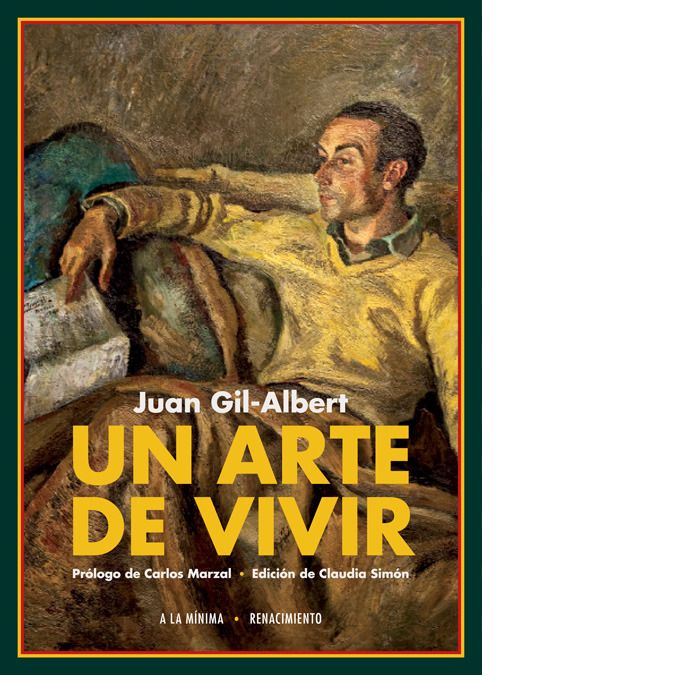Juan gil-albert
Juan gil-albert short poems
Manuel Vilas|07 Sep 2020 – 22:30UTCBeing a writer is also about watching other writers dieManuel Vicent|04 Jan 2019 – 23:00UTCJuan Gil-Albert was a Valencian with white and brown shoes, waffle-colored pants and a light blue polo shirtJavier Rodríguez Marcos|20 Jun 2017 – 21:45UTCOn the eve of Gay Pride, two reading proposals: ‘Esto es mi cuerpo’, by Juan Antonio González Iglesias, and ‘Heraclés’, by Juan Gil-Albert. Great literature without labelsEl País|Alicante|18 Dec 2013 – 11:46CETThe Gil-Albert publishes a monograph of the magazine Canalobre on the origin of this industryJ. Ernesto Ayala-Dip|21 Feb 2012 – 16:14CETThe book by Néstor Sánchez, ‘Nosotros dos-Siberia blues’ remembers the mysterious authors
280 international congress.juan gil-albert
He went into exile from 1939 to 1947 in Mexico and Argentina. In Mexico he is secretary of the magazine Taller, directed by Octavio Paz, and is a film critic for the magazine Romance. He also collaborates in Letras de México and El hijo Pródigo, with poems and prose. At the end of 1942 he travels to Buenos Aires and collaborates in the Argentinean newspapers Sur and in the literary page of La Nación. There he met Jorge Luis Borges and published El convaleciente (1944).
He returned to Valencia in 1947, living an inner exile outside the dominant currents. For this reason, some critics consider him an isolated member of the Generation of ’27, although the date of publication of his first poetic work (1936) has led others to consider him part of the Generation of ’36 or, at least, as a link between both generations.
His definitive consecration would come in 1982 with the Premio de las Letras del País Valenciano. He later received the Medal of Merit in Fine Arts, was awarded an Honorary Doctorate by the University of Alicante and was a favorite son of Alcoy. His complete prose work was published in 1985.
Juan gil-albert institute of culture of alicante.
Some of his best titles correspond to his work as a memoirist: Los días están contados (1974), Crónica general (1974) and Memorabilia (1975). The evocation is often remanes in reflections or becomes imperceptibly fable, so that in his case the limit of the genres is imprecise. Within his essays we should highlight Heraclés (1975), an exposition somewhat similar to André Gide’s Corydon on homosexuality, Drama patrio (1977) and an extensive diary under the title Breviarium vitae (1979).
Juan gil-albert – the melancholy
He went into exile from 1939 to 1947 in Mexico and Argentina. In Mexico he is secretary of the magazine Taller, directed by Octavio Paz, and is a film critic for the magazine Romance. He also collaborates in Letras de México and El hijo Pródigo, with poems and prose. At the end of 1942 he travels to Buenos Aires and collaborates in the Argentinean newspapers Sur and in the literary page of La Nación. There he met Jorge Luis Borges and published El convaleciente (1944).
He returned to Valencia in 1947, living an inner exile outside the dominant currents. For this reason, some critics consider him an isolated member of the Generation of ’27, although the date of publication of his first poetic work (1936) has led others to consider him part of the Generation of ’36 or, at least, as a link between both generations.
His definitive consecration would come in 1982 with the Premio de las Letras del País Valenciano. He later received the Medal of Merit in Fine Arts, was awarded an Honorary Doctorate by the University of Alicante and was a favorite son of Alcoy. His complete prose work was published in 1985.










Más historias
Mejores arquitectos en Palma de Mallorca
La importancia de un interiorista en la transformación de espacios modernos
El baile: Más que coreografías, una forma de vivir